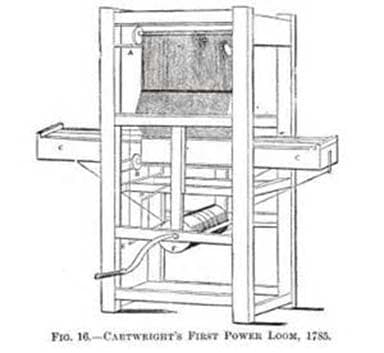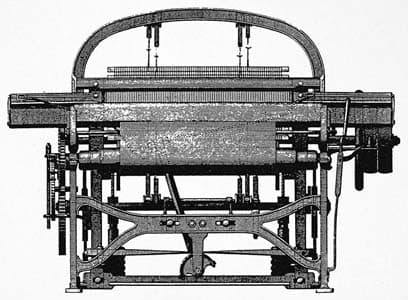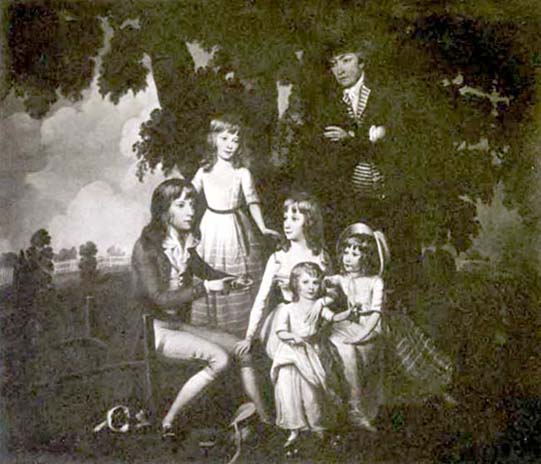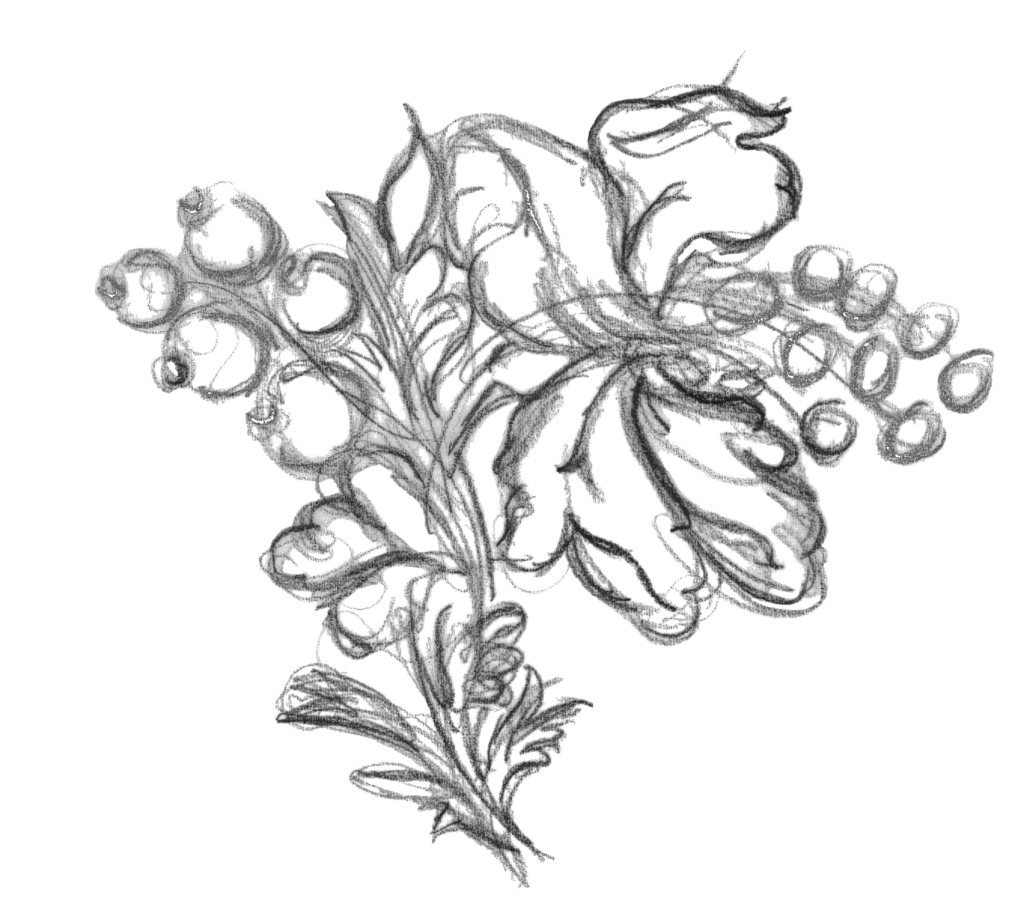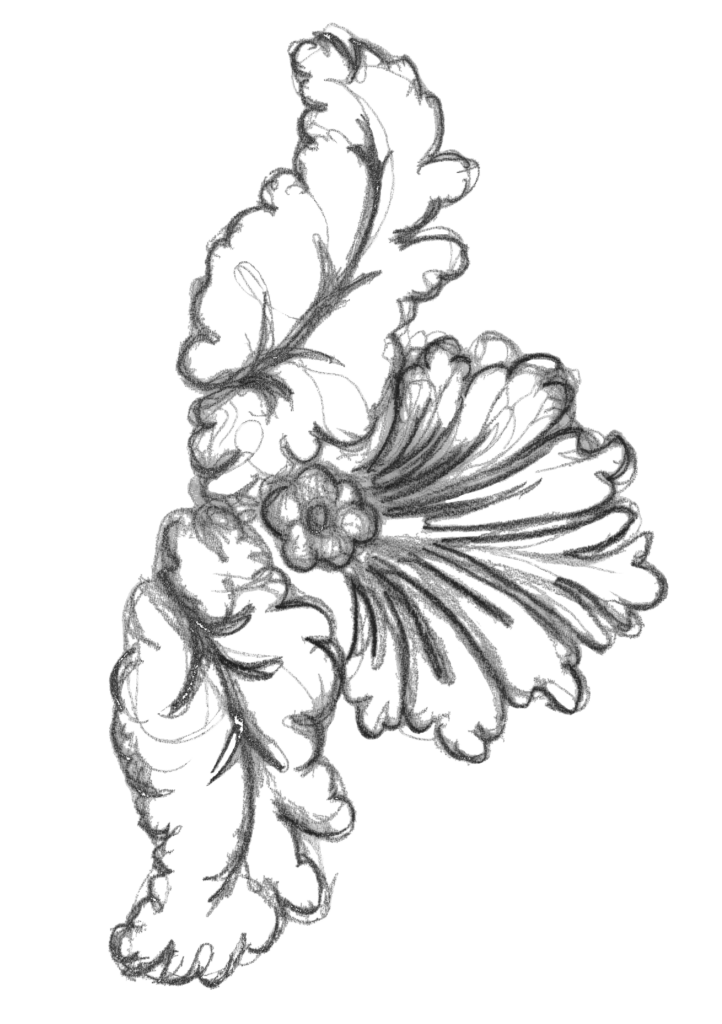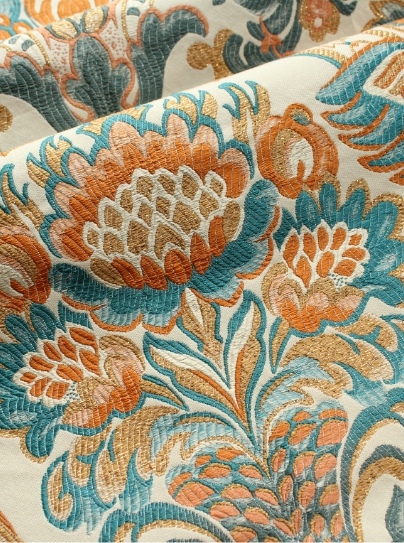Dr. Edmund Cartwright the inventor of the first Power Loom
The Remarkable thing about Cartwright was that he was neither an engineer or carpenter but a clergyman, who did nothing with his inventive genius until he was over forty years of age.
In the summer of 1784 he had overheard that Arkwright’s patent on his spinning invention was soon to expire and the expansion of the cotton trade would demand more weaving of cloth. Having never seen any hand weaving he was to engage on a mission to create a weaving machine, even though he had never had a mechanical thought until that time. Perhaps with ancient illustrations of early looms showing a vertical tapestry style of loom he may have thought that the primitive loom style was the best way forward.
Cartwright took on a Carpenter and set about creating his upright loom to his novel concept which would only require three moving parts. When the loom was threaded ready to weave a cloth of heavy flax to the structure of sail cloth, to Cartwright’s great delight it actually did make cloth. The problem was that the reed fell with the weight of enormous pressure and the shuttle was driven with springs far too powerful and required the strength of two men to operate it. However it was a power driven loom and in April 1785 Cartwright took out his patent imagining that this would prove to be his most valuable property.
Soon after this Cartwright decided to have a look at the hand weaver and was astonished to see how fluid a movement the weaver made to complete the operation of cloth making in the loom. It took a further two years to perfect his second loom. Having observed the hand weaver he tried to address all the reasons why a weaver would stop the loom and mechanically create a solution to overcome the problems. This led to his loom trying to do too much, however his creation retained the conception of what was needed and it became the basis of the power loom. Cartwright was determined to show the industry that his loom would and could create all kinds of woven cloth, and proceeded to build a factory at Doncaster to showcase his invention. The looms were driven by horse power at first, before using a small steam engine. This he then tried to improve, quickly discarding one idea for the next.
What we know is that his inventiveness was to be a costly adventure as the enterprise was to be abandoned at the cost of several thousand pounds. Undeterred he quickly moved on to improve the wool comber which he took out three patents for, before turning his attention away from the textile business and into baking and many farm implements including the three furrow plough. He showed great intellect in understanding what was required, but lacked the perseverance needed to perfect his ideas.
In 1801 he took up the post of manager on the Duke of Bedford’s farm at Woburn but towards the end of his life realized that he had spent all his wealth trying to improve the life of others with his inventions. He tried to get recognition for his inventions and petitioned Parliament in 1808 to support his impoverished life. He was awarded ten thousand pounds in recognition of his power loom invention. He was able to purchase a farm at Sevenoaks in Kent and lived a long life until the age of eighty in 1823.
You may be interested to read our article on Jacquard’s Weaving Revolution
